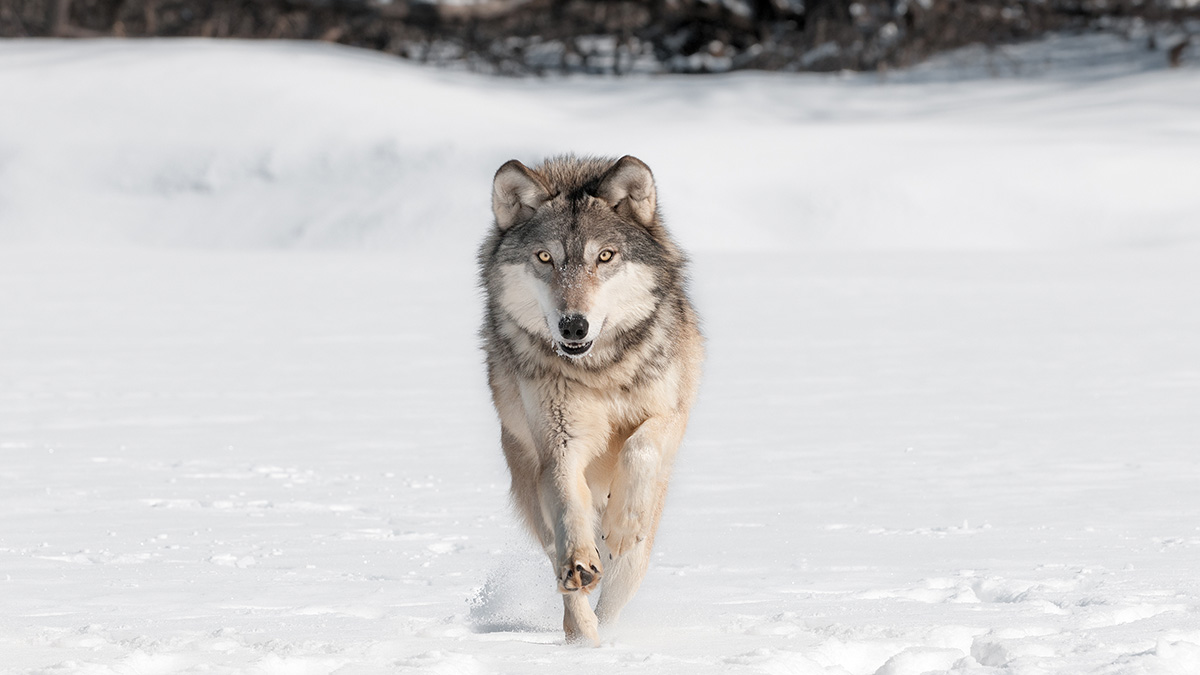英検®にチャレンジしよう!準1級の練習問題 – 長文QA
攻略ポイントはここ! 英検®合格への道しるべ

言い換えを見抜くには語彙力も必要です。知らない語彙が出てきたときは、分かる部分に集中し、消去法も使って正解を導き出しましょう。間違った選択肢を見つけることができるのも、実力のうちです。
お得な情報
小学校での英語教科化、高校・大学受験で英検が使用出来たりと、英検®受験熱は高まる一方です。
Cheer up! Englishでは英検®を受ける方におススメの学校・レビューをご紹介
英検®準1級リーディング大問3 長文問題
Read the passage and choose the best answer from among the four choices for each question.
Wolves in Japan
Even today, we come across witnesses who claim to have seen wolves in the mountains of Japan, but the wild animal was officially extinct at the beginning of the 20th century. Specialists say that the creature witnessed is most likely another animal. In Japan, there were two subspecies of the gray wolf; the Japanese wolf, also called the Honshu wolf, and the Ezo wolf, AKA the Hokkaido wolf. Honshu is the name of the largest of Japan's four main islands, and Hokkaido is the most northern one. Honshu wolves lived on most Japanese islands except the northern islands.
The Hokkaido wolf once roamed around coastal north-east Asia, but its DNA showed that it had the same ancestors as the wolves in Canada and the United States rather than in Asia. It is estimated that Hokkaido wolves arrived in Japan from North America during the last glacial period via a land bridge. At that time, the strait that separates the northern islands and Honshu Island was 3 km wide, which prevented Hokkaido wolves from mixing with Honshu wolves.
The wolves were generally both worshipped and feared in Japan. Unfortunately, in the 18th century, diseases such as rabies were introduced, which drastically decreased the number of Japanese wolves. As one misfortune followed another, in the 19th century, the new government that was struggling to modernize the country promoted aggressive hunting of wolves; exploiting mountains and forests to wipe out wolves.
In Hokkaido, the government of that time began developing American dairy systems. The American advisors didn’t hesitate to use poisonous bait, which had been forbidden by the people of the first nation, the Ainu, out of respect for the wolves. The Ainu, when they happened to kill the animals, never wasted the fur, either. In contrast, modern and systematic extermination turned out to be very efficient, as the livestock predators soon went extinct.
This year though, an enormous bear that killed people and cattle was feared by farmers as well as residents. We also hear about more and more cases of other bears, boars and deer that damage crops and hurt people in villages and towns all over Japan.
(1) Where did wolves live in Japan?
1 Only on the northern islands.
2 Only on the three main islands.
3 On Honshu Island, Hokkaido Island, and other islands.
4 Only on Honshu Island.
(2) What relation did the Hokkaido wolf have to other wolves?
1 It diverged from the gray wolf in North America.
2 It diverged from the Asian wolf.
3 It could join other wolves from any region during the last glacial period.
4 Its ancestor was the Asian wolf.
(3) What was one reason that caused the extinction of Japanese wolves?
1 People feared the wolves so much that they aggressively hunted them.
2 The government introduced rabies to control the number of wolves.
3 Government policy damaged their habitats.
4 Traditional rituals required their bodies as sacrifice.
(4) What is implied about the Ainu people in regard to wolves?
1 When the Ainu people began raising cattle, they needed to get rid of wolves.
2 Ainu tradition put restrictions on the means of killing wolves.
3 Ainu people were allowed to kill wolves but not bears.
4 Ainu people were allowed to kill bears but not wolves.
解答・解説
(1) 3 On Honshu Island, Hokkaido Island, and other islands.
第一段落に二種類のオオカミ、Honshu wolfとHokkaido wolfについて説明があり、最後の行でHonshu wolfは北の島々以外のほとんどの日本の島々に棲んでいたとある。mostに定冠詞が付かなければ、「ほとんどの」という意味になることに注意。
(2) 1 It diverged from the gray wolf in North America.
第二段落の最初の文に、アジアではなくカナダやアメリカのオオカミと共通の祖先を持つとある。これをdiverged from…(~から分化する)と言い換えた1が正解。
(3) 3 Government policy damaged their habitats.
第三段落にthe new government … exploiting mountains and forests to wipe out wolvesとあり、山や森の開発がオオカミを絶滅に追い込んだ原因のひとつだと分かる。
-What was one reasonと聞いている。最も重要だと思われる理由を聞いているわけではない。このような質問で本文に複数の理由が書いてある場合、その中のひとつを述べた選択肢を選べばよい。
(4) 2 Ainu tradition put restrictions on the means of killing wolves.
第二段落の2文目より、毒の使用をアイヌの人々が認めていなかったことが分かり、続く文からオオカミを殺すこと自体はあったことも分かる。したがって、オオカミを殺す手段に制約を設けていたことが分かる。
和訳
日本のオオカミ
今日でも日本の山でオオカミを見たという話を聞くことはあるが、オオカミは公式には20世紀初頭に絶滅している。専門家によれば、目撃された生き物はおそらく他の動物であろうとのことである。日本には、ハイイロオオカミの亜種が二種類生息していた。ひとつはニホンオオカミまたはホンシュウオオカミと呼ばれるもの、もうひとつはエゾオオカミ、またの名をホッカイドウオオカミと言う。日本の主な4つの島の中で最も大きい島の名が本州であり、最も北にあるのが北海道である。ホンシュウオオカミは北の島々を除くほとんどの日本の島々に棲んでいた。
ホッカイドウオオカミは北東アジアの沿岸一帯を歩き回っていたが、DNAによって、アジアではなくカナダやアメリカのオオカミと共通の祖先を持つことが明らかになった。ホッカイドウオオカミは、最後の氷河期にランドブリッジを通って北アメリカ大陸から日本にたどり着いたと思われる。当時本州と北の島々を隔てる海峡は3kmで、これにより、ホッカイドウオオカミとホンシュウオオカミが交わるのが妨げられた。
オオカミは、日本では一般的に崇められると同時に恐れられていた。不幸なことに、18世紀に狂犬病などの病気が入ってきて、ニホンオオカミは激減した。これに追い打ちをかけるように、19世紀には近代化に苦闘していた新政府が攻撃的なオオカミ狩りを推奨し、山や森を開発してオオカミを全滅に追い込んだ。
北海道では、当時の政府がアメリカ式酪農を展開し始めた。アメリカ人の相談役は毒餌を使うことにもためらいがなかったが、それは先住民アイヌがオオカミへの敬意から禁止してきたことであった。アイヌの人々は、オオカミを殺すことがあった場合、その毛皮を無駄にすることも決してなかった。これと対照的に、近代的で組織的な駆除は実に効率的な結果を生み、家畜の捕食者であるオオカミはほどなくして絶滅した。
しかし、今年は巨大なクマが人々や家畜を殺し、酪農家や住民に恐れられた。また、他のクマやイノシシ、シカによる農作物の被害や人への損害が日本中の村や町で増えている。
(1) オオカミは日本のどこに棲んでいましたか。
1 北の島々のみ。
2 主な3つの島々のみ。
3 本州、北海道とその他の島々。
4 本州のみ。
(2) ホッカイドウオオカミと他のオオカミはどのような関係にありましたか。
1 ホッカイドウオオカミは北アメリカのハイイロオオカミから分化した。
2 ホッカイドウオオカミはアジアのオオカミから分化した。
3 ホッカイドウオオカミは最後の氷河期にはどの地方にいるオオカミにも合流することができた。
4 ホッカイドウオオカミの祖先はアジアのオオカミだった。
(3) ニホンオオカミが絶滅したひとつの理由は何ですか。
1 人々はオオカミを恐れたあまり、攻撃的にオオカミを狩った。
2 政府はオオカミの数をコントロールするため、狂犬病を導入した。
3 政府の政策により、オオカミの生息地が損害を受けた。
4 伝統的な儀式のために生贄としてオオカミの体が必要だった。
(4) オオカミとの関係で、アイヌの人々について何が分かりますか。
1 アイヌの人々が牧畜を始めたとき、オオカミを駆除する必要があった。
2 アイヌの伝統はオオカミを殺す方法に制限を設けていた。
3 アイヌの人々はオオカミを殺すことは許されていたが、クマを殺すことはできなかった。
4 アイヌの人々はクマを殺すことは許されていたが、オオカミを殺すことはできなかった。
| ライタープロフィール●外国語人 | |
 |
英語、フランス語、外国語としての日本語を教えつつ、語学力に留まらない読む力、書く力を養成することが必要であると痛感。ヨーロッパで15年以上暮らし、とりあえず帰国。この世界の様々な地域で日常の中に潜む文化の違いが面白くて仕方がない。子育て、犬育て中。TOEIC®985点 |
※英検®は、公益財団法人 日本英語検定協会の登録商標です。このコンテンツは、公益財団法人 日本英語検定協会の承認や推奨、その他の検討を受けたものではありません。



















